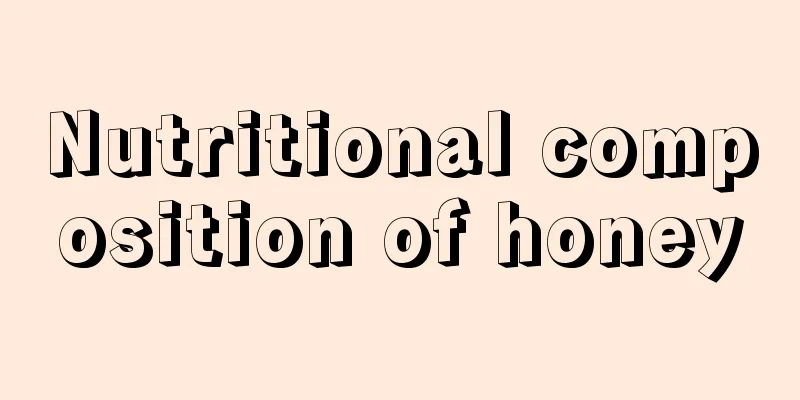Nutritional composition of honey

|
Honey is a common thing in daily life. It is also very effective for people's physical health and nutritional supplements. It is usually consumed as a health product, mainly because honey itself is rich in nutrients and is loved by many people. Many people know that different things on the market have certain nutritional composition tables to reflect their nutritional status. So what should the nutritional composition of honey look like? 1. Water content: Generally, the water content of honey is 15%-25%, and the water content of mature honey is below 18%. The less water content, the higher the grade of the honey. 2. Carbohydrates: Carbohydrates in honey account for 70% to 80% of the total composition, of which fructose and glucose are the main components, accounting for 80% to 90% of the total sugar content. In addition, it also contains disaccharides and polysaccharides, such as sucrose, maltose, raffinose, dextrin, melezitose, etc. Since honey is a high-concentration sugar solution, it produces a lot of calories like sucrose. 1 kilogram of honey can produce 3280 calories, making it an excellent food for strengthening the body and health. 3. Minerals: The mineral content in honey is generally 0.04%-0.06%, including iron, copper, potassium, sodium, tungsten, zinc, manganese, magnesium, phosphorus, calcium, etc. 4. Vitamins: Due to the different varieties of honey, the vitamin content is also different. 5. Protein and amino acid: The crude protein content in honey is 0.20%-0.26%, the crude protein content in asparagus is 0.2%, the crude protein content in cotton is 0.4%, and the crude protein content in buckwheat is 1.26%. There are about 16 kinds of amino acids in honey, including lysine, arginine, threonine, methionine and amino acid. 6. Enzymes: Honey is rich in enzymes, which is incomparable to other foods. The enzyme in honey is invertase, which converts sucrose into glucose and fructose. In addition, honey also contains a large amount of amylase, catalytic enzyme, phosphatase, and glucose oxidase. 7. Dextrin and colloid: The dextrin in honey is different in different types of honey. The dextrin content in rapeseed honey is 0.37%, in purple honey it is 0.75%, in clover honey it is 3.41%, and in honeydew honey it is over 100%. Colloid is also a component of honey. Generally, the colloid content of light-colored honey is about 0.2%, while that of dark honey is about 1%. 8. Other substances: Honey also contains inositol, pigments, biologically active substances, acetyl bile, etc. |
>>: What to do if there is a big gap between the front teeth
Recommend
What are the prevention and control measures for multi-drug resistant bacteria
The rate of multidrug resistance is increasing, a...
Is adenovirus highly contagious?
In daily life, adenovirus is a relatively common ...
The left side of my chest hurts from time to time
Chest pain is a very common symptom and many dise...
What are the MRI manifestations of prostate cancer
MRI mainly relies on T2-weighted images to detect...
What are the dietary taboos for liver cancer patients? There are five major dietary taboos for liver cancer patients
Liver cancer is a common disease. If the disease ...
What to do if there is a little bleeding during early pregnancy
After a woman becomes pregnant, her menstruation ...
What vaccines are likely to cause fever?
Many babies will develop many uncomfortable sympt...
What is lip trembling? People should know
Speaking of lip tremors, it is actually the twitc...
What are the early symptoms of brain cancer
Brain cancer is a malignant tumor in the brain. T...
How to treat internal chest injuries
Many people often feel chest pain during work, wh...
What's the matter with red spots on the body in the late stage of liver cancer? A comprehensive examination is needed
In the late stage of liver cancer, many complicat...
Is there a cure for mid-stage 3-negative breast cancer?
Is there a cure for mid-stage 3D breast cancer? 1...
What are the benefits of keeping onions indoors?
Speaking of onions, we are all very familiar with...
What are some tips for treating loose eyelids?
Eyelids are a very sensitive tissue and play a ve...
What's wrong with the four weak branches?
Some people have physical examinations every year...









